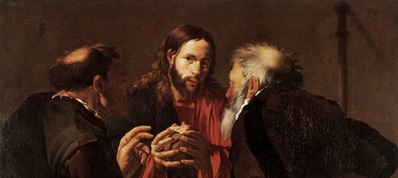It is close to astonishing to witness the Renaissance in
the study of the life and work of Adolf Schlatter (1852-1938). But why is he so
significant? Why are people like James D.G. Dunn, Markus Bockmühl, Robert
Morgan and many others referring so positively to him? Apart from his 439
published pieces, and Kittel's first volume of the Theological Dictionary of the New
Testament dedicated to him,
Schlatter has, in the words of Robert Yarbrough "staying power". Yarbrough
explains:
"Over thirty books by
Schlatter still in print (more than any other theologian of his era) attest to
the staying power of his scholarship. His
contribution was many-sided. He
was far ahead of his times in stressing the importance of Jewish backgrounds
for understanding Jesus and the early church, an insight vindicated by
discovery of the Dead Sea Scrolls and championed in Schlatter’s train today by
the likes of Martin Hengel and Markus Bockmühl. His arguments for the validity of
theological concerns in critical exegesis, rejected by liberalism of the day,
retain importance and mark Schlatter as a forerunner to Barth. Yet unlike (at least the early) Barth,
Schlatter insisted on a Jesus of history, attested to by Scripture, as of equal
importance with the saving Christ of faith. Schlatter sided with Brunner in the
latter’s tiff with Barth over natural theology (although he rejected
neo-orthodoxy’s neo-Kantian doctrine of revelation); he feared that Bultmann’s
proposals set the stage for a slide toward atheism. In sum, Schlatter modelled an
independence of thought and fidelity of Christian faith that are still
suggestive in academy and church today. For those who understand Christian
faith not only in academic but also in pastoral terms, Schlatter’s contribution
may be gauged by the large number (and continuing heritage) of ministers and
students he encouraged. His
somewhat fiery free spirit still inspires, as well: Tübingen’s first woman
theological licentiate, Lydia Schmidt, pointed to Schlatter’s encouragement in
learning and belief. (Other
professors at the time fought against women’s presence in the
university.) Paul
Schneider, the first Christian minister to be martyred by the Nazis
(Buchenwald, 1939), experienced his conversion from liberal to historic
Christian convictions through interaction with Schlatter’s dogmatics, and in
Dietrich Bonhoeffer’s (1906-45) last working library the only other author so
richly represented and consulted was Luther. Schlatter’s example of rigor
in thought, creativity in formulation, courage in expression, and artlessness
in practical service amply justify the apparent renaissance in Schlatter
studies currently underway" (Robert Yarbrough, “Adolf Schlatter (1852-1938) as ein Lehrer der Kirche (a Teacher of the Church)”, Scripture Seminar,
April 2004).
I
am currently reading Adolf Schlatter's The
History of the Christ. The Foundation of New Testament Theology (Baker Books: Grand Rapids, 1997),
translated by Andreas J. Körstenberger.
As I'm working my way through it, I
sense parallels with i.e. NT Wright's Jesus
and the Victory of God (Fortress
Press: Minneapolis, 1996), and also Paul Barnett's Finding the Historical Christ (Eerdmans: Grand Rapids, 2003).
I really like the way in which
Schlatter takes serious the dominant liberal theories of his day and how he
deconstructs them. His chapter on the resurrection is a good example. Remarkably close to Edward Schillebeeckx's view, Schlatter describes one
theory for the Easter faith like this:
"The disciples entered the
Easter account in a mood oscillating between despair and hope, unable to give
up their faith in view of Jesus' earlier words and deeds, and unable to retain
it in view of his death; and from these waves of emotions visions emerged that
ended all doubt, experiences of high value for the disciples although they were
found merely in their own subjective realm" (377).
"If
the disciples had looked for the basis of their faith in Jesus to the internal
movements of their soul, the church would have turned into a gathering of
mystics who spent their time trying to produce within them the ecstatic
condition by which the Christ would become visible also to them. The idea,
however, that it was Christianity's calling to enhance its emotions to such a
degree that it would culminate in a vision of Jesus wherein the assurance of
salvation was rooted or completed is not interwoven with early Christian
history. The disciples always and solely, by a sober use of the idea of truth,
understood faith in such a way that what happened showed them what God was and
did, so that the objectiveness of an accomplished fact would present the basis
for their conviction and the goal for their will ... The Easter account did not
create the effort in the disciples to retreat into their inner lives and to
seek there the revelation of God that world history denied them. Conversely,
their lives rather received its basis and its power from the event that came to
them externally ... If the disciples' conviction of having seen Jesus once more
subsequent to his death was derived from visionary states of being, the
consequences of this process would have had to be revealed in the entire state
of piety. As a result, we would have received in the place of Christianity a
religion in which the individual elevated himself to God one way or
another" (379).


